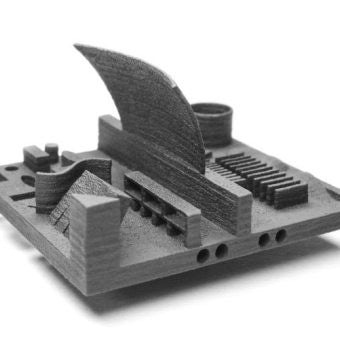When adidas announced the launch of its first mass-produced 3D printed shoe, the Futurecraft 4D, last month in New York, the implications of the release were far greater than the footwear industry.
Adidas is marketing this shoe as the first mass-produced 3D printed shoe, set for a 100,000 pair release in 2018. Ultimately, the technology going into the Futurecraft 4D will enable the shoe to be customized to the user’s foot.
Here at 3Dshoes, we plan to store 3D scans of users feet in the cloud, enabling consumers to quickly purchase customized footwear across several manufacturers. Traditional shoe sizes may become a thing of the past.
The rise of 3D printed shoes will shift manufacturing back to the U.S. and away from Asia, which could be the start of a massive manufacturing renaissance stateside.
The market is currently seeing a rise of digital direct-to-consumer retail brands offering unique value proposition traditional retailers are unable to provide. These types of companies are popping up in nearly every niche imaginable, where the companies are able to offer deep discounts and superior products due to their online-only presence.
Ultimately, it will be important for traditional retailers to acquire or invest in digital-native companies to continually offer the best products to consumers and be at the forefront of innovation. A unique characteristic of many of these brands, alongside new technologies including 3D printing, is the ability to create customizable products to each consumer.
WIIVV Latches Onto The Power Of Customization
Take WIIVV for example: the company is an online-only platform that enables 3D printing technology to scan a user’s foot to make customizable insoles manufactured in the U.S. and delivered within five days. A traditional orthotic takes 42 days to deliver, is more costly and is typically manufactured in Asia. With the rise of new technology, customization is becoming more prevalent and, contrary to popular belief is often cheaper.
“The market opportunity is huge; the capability of going custom is in the trillions because footwear is where it begins. But this is going to happen across apparel, sports-gear … anything that interfaces with the body, custom is the direction it is going and we are going to bring the custom price down,” said WIIVV CEO Shamil Hargovan.
Through their revolutionary technology, WIIVV managed to launch the most successful 3D-printed product ever on Kickstarter.
“By delivering custom products, you are reducing inventory. I would not underestimate the power of inventory reduction in the supply chain,” added Hargovan. “What it does for the business model of companies, ultimately, what it will do for companies, to be able to move from cash upfront inventory model to an on-demand model that significantly reduces waste, it also ensures customer is that much better. Customers are seeking out better experiences.”
While in its early stages, the shift toward mass customization is gaining momentum; existing brands will need to heed notice or get left behind.
#3DShoes #3DPrintedShoes #3DPrinted




